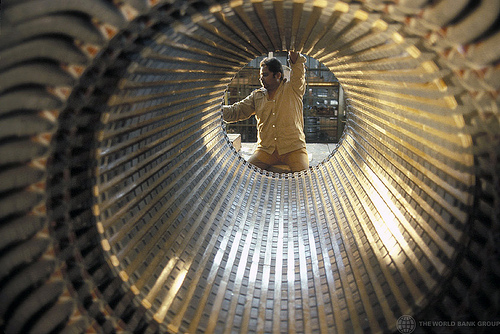Content from the Brookings Institution India Center is now archived. After seven years of an impactful partnership, as of September 11, 2020, Brookings India is now the Centre for Social and Economic Progress, an independent public policy institution based in India.
Subir Gokarn: The earlier assessment was made at a time when the rupee had not depreciated. It is obviously showing signs of stability, importantly because of the announcement by the FED and the expectation that liquidity levels will continue to remain buoyant in the global economy. However, the depreciation over the last six or seven weeks will contribute to an increased export competitiveness and sectors like software will not face too many constraints in terms of rapidly-expanding exports.
Manufactured goods will face some constraints, but the potential to increase exports of manufactured goods is there in textiles and garments, whether it is leather goods and auto components. The latter, I think, have great potential because our component manufacturers are plunged in to a global supply chain. There are, however, infrastructure constraints to be kept in mind. There are power issues, transport bottlenecks, some of which will dilute the potential benefits of the rupee depreciation.
However, overall, there is a reasonable expectation that exports will respond positively to the rupee depreciation and that would allow for some scaling down of the absolute deficit forecast.
ET Now: Do you anticipate volatility in the forex market to trickle back?
Subir Gokarn: Instead of plumbing dollars into the markets directly, it is being done through a special window, that is, swaps. Obviously, these dollars have to be returned and the hope is that when supply of dollars, which is essentially inflow of foreign investment, returns, then these swaps will be executed. So obviously all of this depends on what happens to the domestic investment climate.
The other side of the equation is the attractiveness for foreign investors to invest into India and that means policy changes, reforms, signals, all of the things that we have been talking about for the last several weeks.
Therefore, these two steps need to go hand in hand by selling dollars directly with the expectation that these deals will be reversed in the future. Underlying that is the expectation that inflows will also improve.
ET Now: Do you think we are done with staring at a balance of payment crisis?
Subir Gokarn: There is clearly an element of self-correction when the currency has depreciated so much. The fact that it appears to be happening is not very visible in these numbers, but that is the expectation that people are working with for the next few quarters. There is no question that this is a positive development and that should abate some of the concerns, but I still think we have to be focussed on why the current account deficit went from below 3% of GDP to almost 5% in two years. The two big contributors are iron ore and coal and if we do not do anything about them, the CAD may come down somewhat, but the basic vulnerability would remain and we have to address it.
This article was originally found here at www.indiatimes.com









Commentary
Op-edInfra bottlenecks will dilute potential benefits of weak rupee: Subir Gokarn
October 1, 2013